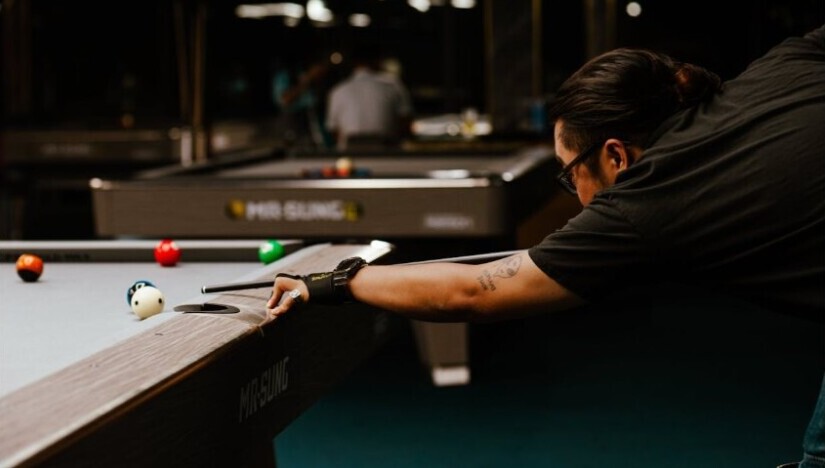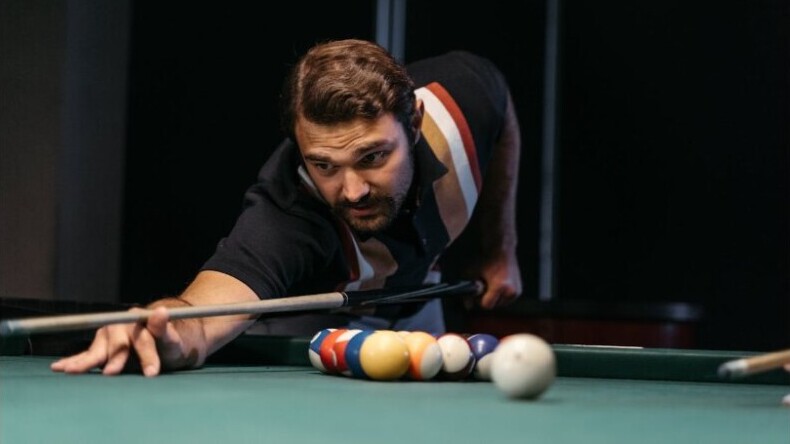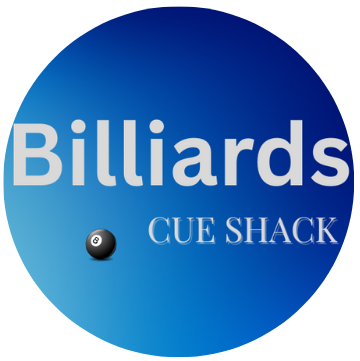Billiards is a game that rewards focus, patience, and technique. If you’re hoping to pocket more balls and improve your consistency, your stance is one of the first things worth tuning up. The right stance isn’t just about looking sharp at the table. It gives you the solid foundation you need to aim, stroke, and follow through with accuracy. Let’s walk through what goes into finding your best stance and how it can help you make every shot count.

Why the Right Stance Matters for Cue Accuracy
Standing correctly isn’t just about comfort or tradition. Your body needs to be stable but relaxed, giving your cue arm room to move freely while still keeping your head steady over the shot. When your stance is off, little wobbles or tension can throw off your accuracy, even if your aim looked spot on. I’ve learned that working on my stance made a big difference in my consistency, especially on the tough shots.
Most pro players spend a lot of time perfecting their setup, and for good reason. The stance you use shapes your whole swing, controls your balance, and helps you repeat your best mechanics shot after shot. Building good habits early means fewer corrections later, so for anyone aiming to get better at pool, snooker, or any cue sport, putting in effort into your stance pays off. Beyond that, a reliable stance can also help you keep your composure under pressure, making it easier to stay focused during a match.
The Fundamentals of a Balanced Pool Stance
A good stance combines three main pieces: foot placement, upper body posture, and the cue’s path. Here’s what I look for:
- Foot positioning: My lead foot (opposite my stroking hand) usually points straight at the shot line, while my back foot is angled slightly out for balance.
- Knees slightly bent: Standing too stiff makes it tough to keep your stroke smooth, so I keep a soft bend in both knees.
- Weight distribution: Most of my weight is on the balls of my feet, split pretty evenly but with a slight lean forward. This stops me from rocking backward and losing control.
- Shoulder width apart: I like my feet about shoulder width for stability, which prevents toppling or swaying as I strike.
Everyone has a slightly different preference, so small tweaks are fine. The main goal is to feel balanced and stay steady as you eye the cue ball. With practice, you’ll pick up on which stance gives you the most comfort and control and helps set you up shot after shot.
How to Stand for a More Accurate Cue Action
Once your feet are in place, your upper body position becomes super important. The body position shapes how you see the shot and how easily your cue comes through in a straight line. Here’s how I line myself up:
- Head low and eyes level: Lowering your head lets you see the line of the shot clearly. I keep my chin as close to the cue as is comfortable, without scrunching my shoulders.
- Upper body relaxed: It’s easy to get tense on tough shots. I breathe out slowly and let my shoulders drop so the stroke feels smooth, not forced.
- Back arm vertical: My stroking arm hangs straight down from the elbow, giving a straight, consistent follow through the cue line.
- Bridge hand steady: I plant my bridge hand firmly on the table, which is important for stability as the cue moves through.
The trick here is consistency. I practice a pre-shot routine, positioning into my stance the same way each time. That routine helps quiet nerves and gives every shot a familiar starting point. Consistency in your setup transfers to repetition in your shots, making improvement a lot smoother.
Best Pool Cue Position: Lining Up for Success
 The way you hold and aim the cue is the finishing touch to a great stance. If your grip or alignment feels awkward, it’s going to show up in your aim. Here’s what I’ve learned works:
The way you hold and aim the cue is the finishing touch to a great stance. If your grip or alignment feels awkward, it’s going to show up in your aim. Here’s what I’ve learned works:
- Grip: I keep my cue grip light but controlled, avoiding the urge to squeeze. Holding too tightly makes the cue wobble, while too loose lets it slip, so somewhere in the middle is ideal.
- Bridge: For most shots, I use either an open or closed bridge, depending on comfort and angle. The key is the bridge is solid and keeps the cue level through the stroke.
- Alignment: Before shooting, I double-check that the cue, my chin, and my stroking arm all point along the shot line. I picture an invisible line from the cue tip through the cue ball and into the target.
- Follow-through: After contact, I keep my cue moving in a straight line for a good follow-through. This helps drive the cue ball straight instead of causing accidental sidespin.
If you want to boost your alignment even more, try practicing in front of a mirror or record yourself while doing pool drills to catch any subtle missteps. Regular check-ins like this can help you maintain good habits.
Tips for Boosting Your Accuracy in Billiards
 Accuracy isn’t just about aiming at the right spot, but delivering the cue ball where you intended. My approach has improved a lot over the years by using these tips:
Accuracy isn’t just about aiming at the right spot, but delivering the cue ball where you intended. My approach has improved a lot over the years by using these tips:
- Slow Down: Rushing the stance or shot often leads to mis-hits. Taking a moment to steady yourself before pulling the trigger lets your brain and body sync up better.
- Watch the pros: Studying high level pool or snooker players gives plenty of insight into how the best players stay consistent with their stances and cueing motion.
- Drills: Practicing straight-in shots and basic cue ball control is super helpful. Repeating the same shots while focusing on your stance locks in better habits.
- Stay relaxed: Tension sneaks in easily, especially in high-pressure games. Loosening your grip and focusing on breathing helps fight off the jitters, and more accuracy follows.
- Use cues with the right weight and tip: A cue that feels comfortable and balanced helps you groove your stance and alignment more naturally. Test out cue weights and tip types until you find what fits you best.
- Work on visualization: Picture your shot path, including where the cue ball will go and how tangling with other balls might affect the outcome. Visualization can build confidence and plan better shots.
Regular practice, even for just a few minutes a day, can lead to more steady results. Also, if possible, try mixing up your practice table or partner every once in a while to keep things fresh and challenge your muscle memory.
Common Stance Mistakes and How to Fix Them
You don’t have to be a pro to avoid the most common stance pitfalls. I’ve caught myself making these mistakes, and correcting practice made all the difference:
- Feet too close together: This leads to swaying and makes it hard to keep your balance after the shot.
- Leaning too far over: If your chin is buried in your chest or your back hurts, try raising up a bit. The aim is a flat, stable spine, not overreaching.
- Over-gripping: Tension in your hand or forearm can show up in the final shot as a jerk or swerve.
- Rushing setup: Skipping your pre-shot routine leads to inconsistency. I find taking just a second to settle in makes a major difference.
- Inconsistent bridge height: Sometimes letting your bridge hand rise or lower unintentionally makes for unwanted spin or cue movement. Keeping that hand steady on every shot makes outcomes more predictable.
Videoing yourself or asking a friend to check your setup can shed light on habits you might not see on your own. Slow-motion footage is especially helpful for spotting if you’re pulling up your body early or shifting your feet while shooting.
Practical Advice for Cue Sports Beginners
If you’re just getting your start, it’s easy to be overwhelmed by all the technique tips out there. Here’s a quick-start checklist based on what I wish I knew earlier:
- Focus first on comfort and balance. Once you feel solid over the shot, the rest comes easier.
- Experiment with your stance width and cue position, but return to basics if something feels awkward.
- Practice stepping into your stance from behind each shot, lining up your target before setting your feet.
- Drill easy shots first, paying more attention to your body position and follow-through than results.
- It’s worth checking out local clubs, lessons, or pool halls to get tips from more experienced players.
- Don’t put too much pressure on yourself. Learning to feel comfortable is part of the fun, and that encourages you to keep playing and improving.
- Keep a journal of your practice routines if you will, making notes of what worked and when things clicked. This can help you pinpoint strengths and weaknesses, making your progress easier to spot over time.
Your stance and alignment grow stronger with time, so patience is necessary. I find that each little tweak and extra bit of attention gives me more confidence in the long run. Stick with it, and you’ll find your best stance becoming your new normal.
Frequently Asked Questions
Still got questions about pool stance and accuracy? Here are some popular ones I hear as a billiard regular:
How do I become more accurate in billiards?
Answer: Focus on a balanced, repeatable stance that feels comfortable. Take the time to align your eyes and cue with the shot, then follow through in a straight line. Practicing with intent on straight shots and basics leads to more accuracy in the long run.
What is the best stance for billiards?
Answer: The most effective stance is the one that feels natural but steady. For most people, that means feet about shoulder width apart, a slight bend in the knees, and most weight balanced forward. The lead foot points toward the shot, with the back foot angled out for balance. The upper body should be relaxed, with the head low and eyes over the cue.
How should I stand while cueing?
Answer: Start straight behind your target line, then step into your stance with your back foot first, followed by the front. Make sure your bridge hand is firm on the table, your stroking arm hangs straight, and you keep your body as steady as possible.
What is the best pool cue position?
Answer: Your best position is when the cue is parallel to the table and your grip allows a smooth, straight swing. A controlled, relaxed grip and a consistent bridge makes it easier to keep the cue moving in line with your shot.
Level Up Your Game With the Right Stance
Dialing in your stance is one of the quickest ways to sharpen your game, whether you’re playing for fun or looking to compete. With a steady foundation, clear sight lines, and smooth cue action, you’ll not only see better results, but also build a rhythm that makes every shot feel easier. Your own comfort and balance are the best guides, so experiment with small tweaks, keep what helps, and don’t stress about looking exactly like the pros. Over time, the right stance becomes second nature, and your cue accuracy will follow along.
Keep practicing, stay patient with the process, and remember that even a few improvements in your stance can make the rest of your pool adventure so much more enjoyable. Good luck at the table!
